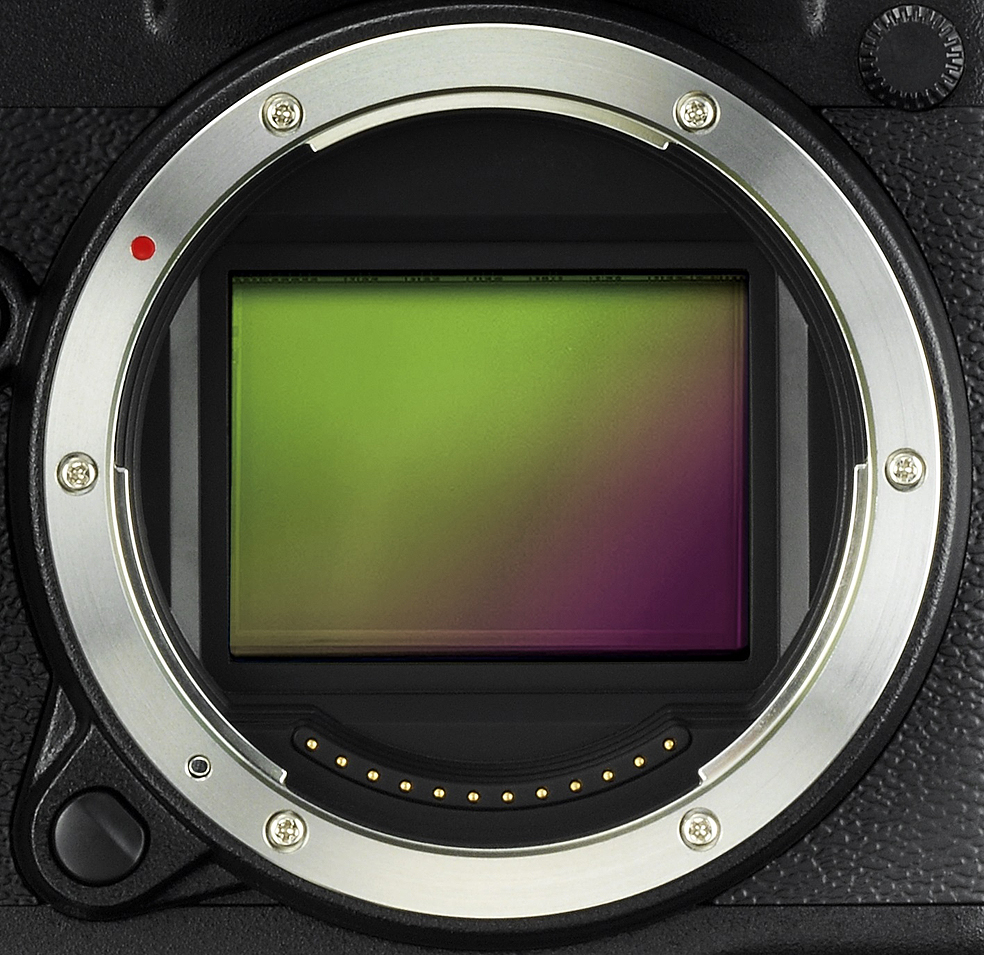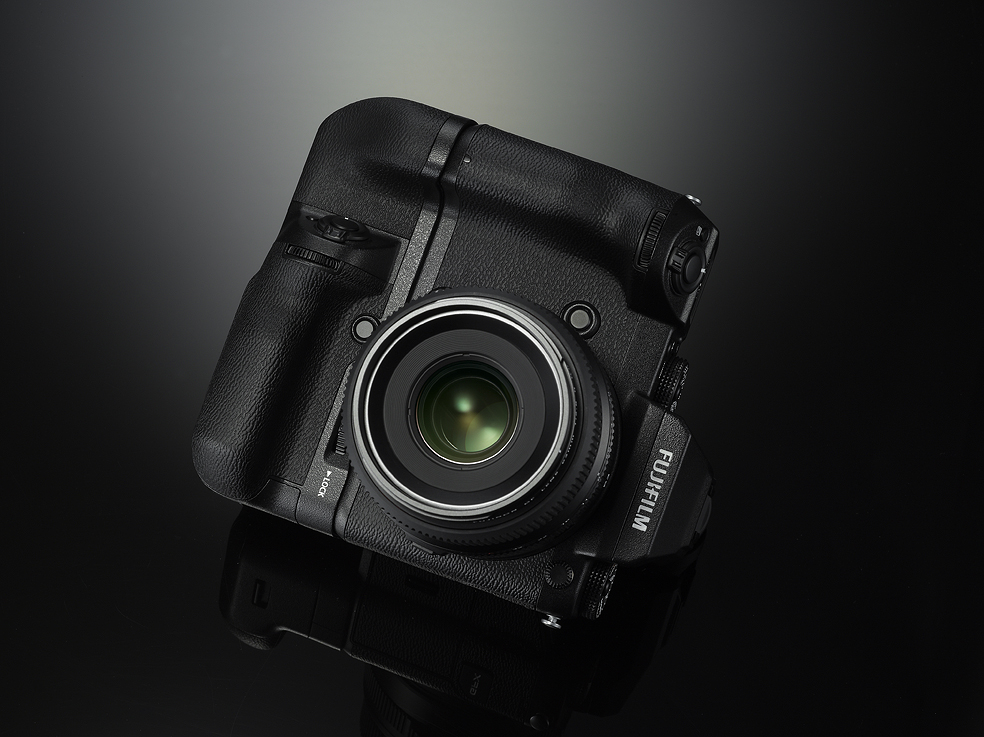
FUJIFILM GFX 50S.
NEW MEDIUM FORMAT CAMERA.
January 24, 2017.
As early as February, we will be able to purchase a new Fujifilm GFX 50S medium format camera and GF lenses. I will try to briefly summarize, what can be expected from this interesting news.
SENSOR.
Its dimensions are 43.8 x 32.9 mm. Resolution 51.4 Mpx, CMOS, manufacturer allegedly Fujifilm. However, I don't want to believe it too much, because with similar sensors, the proverbial bag has now been torn and they all come from the workshop of the Japanese Sony. That Fujifilm would develop his own sensor in this situation, as he claims, seems a bit ... illogical to me. In addition, the greens were certainly in a hurry to introduce the new camera (developing your own image sensor is not a job for a few days), especially after Hasselblad introduced a similar system. However, this somewhat self-centered company now has other concerns, as its debts (after highly intelligent decisions such as we take Sony NEX, add a wooden handle and sell it for a quarter of a million CZK) have already gotten it into such trouble, that it was bought by a chinese Dji. So after Volvo (since 2013 it has belonged to Zhinjang Geely) Hasselblad. So I wonder, where all the good nordic qualities go? - But let's go back to Fujifilm and the doubts about the sensor manufacturer. These are further enhanced by the fact, that it is a CMOS with a standard Bayer mask, not an X-Trans. Reportedly to avoid RAW issues that occurred after the launch of X-Trans and dragged on for quite some time. Interestingly, I did not find anywhere, whether the sensor is equipped with an AA filter. So let's hope, that this stupid smudger definitely belongs to photographic history.
For me, the biggest disappointment is only 14-bit RAW, in medium-format waters 16 bits are perhaps quite common ... a pity. Probably a ready argument for buying another model. Fujifilm promises a dynamic range of 14 EV, we'll see, how it actually works, but after a very good experience with the X-PRO1 I can say - why not. The basic ISO sensitivity is, unlike the X series, 100, the highest 12 800, it can be extended up to 102 400.

MOUNT AND LENSES.
The mount is brand new, his name is G. Its inner diameter is 65 mm. The first three lenses are to be introduced in February together with the camera: GF 63 mm F2.8 R WR, GF 120 mm F4 R LM OIS WR Macro and GF 32-64 mm F4 R LM WR. All should be, like the camera, resistant to moisture and dust, Fujifilm also guarantees trouble-free operation down to -10°C. Which is good news, the lack of durability in outdoor photography was a big disappointment for me with the otherwise excellent Zeiss Otus lenses. It is interesting, that after Carl Zeiss, Fujifilm manufactured lenses for the above-mentioned Hasselblad. However, not anymore for the new medium-format mirrorless camera X1D, there the Swedes allegedly agreed with another company, completely unknown to the photographic public (I will not even remember the name). Whether this preceded or followed Fuji's decision to produce its own medium-format system, hard to say.
OTHER.
Shutter is a mechanical curtain type, with the shortest time 1/4000 second, which is quite sufficient. Flash synchronization is at 1/125, I would welcome a shorter time here, but it's not a major problem. With the electronic "shutter" we can work with a time of 1/16 000 second.
Rear screen has a diagonal of 3.2" (approximately 8.1 cm) and an excellent resolution of 2.36 million dots. It can be tilted, up and down at angles of 90° and 45°, to the right of 60°.
Optical viewfinder we will not find here, the device does not have a mirror, so it was necessary to make an electronic one. It can be detached, which is very practical, in addition, we can not only lift it up in the range of 0° - 90° in five steps, but also tilt it horizontally by 45° on both sides, which we will appreciate when turning the camera vertically. The monitor inside has an excellent resolution of 3.69 million pixels, so hopefully the individual dots will no longer be visible, which is the biggest ailment of perhaps all electronic viewfinders.
It is possible to attach a vertical grip to the camera, a very nice thing.
Photographs can be converted to TIFF (hooray, not JPG) directly on the camera, but only 8-bit (why not 16?). JPG can also - but I ask again why, if we have losslessly compressed or uncompressed PNG? (I know, there will be new model ...)
You can purchase a large format camera adapter.
So much just a brief overview of the most interesting. This also brings us to the main one, which is
PRICE.
According to various sources, it seems so far, that the price in our country should be around 125 000 CZK without VAT just for a camera without a lens. Which is very good at medium format camera world. The question remains, how much will Fujifilm want for the lenses. I assume, that less than 40 000 CZK without VAT for the cheapest ones can not be expected.

CONCLUSION.
After the very successful production of not only high-quality, but also beautiful X cameras with an APS-C size sensor, Fujifilm decided to jump 36 mm and enter straight into the medium format. He has extensive experience in this field since film times. If he keeps his accountants locked in the basement and leaves the prices of the lenses within reasonable limits, while the quality of the photographs will be excellent, we really have something to look forward to. The only disadvantage of the medium format is the even smaller depth of field than with 36 mm sensors, which is often good, but less so, for example, when photographing landscapes. But we will see, how it will be in reality.
© Martin Mojzis, 2017.
Photograph: © Fujifilm.
►To the beginning of the article.
►Overview of all articles.
►Homepage.
►Site Map.